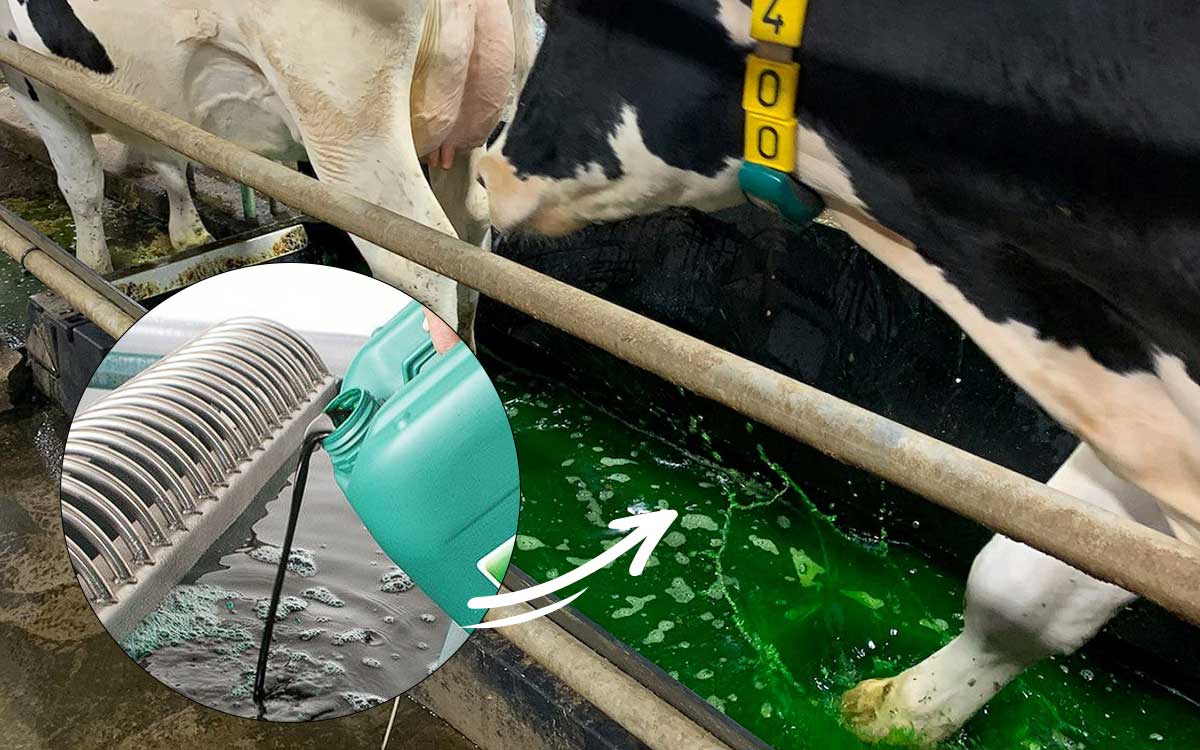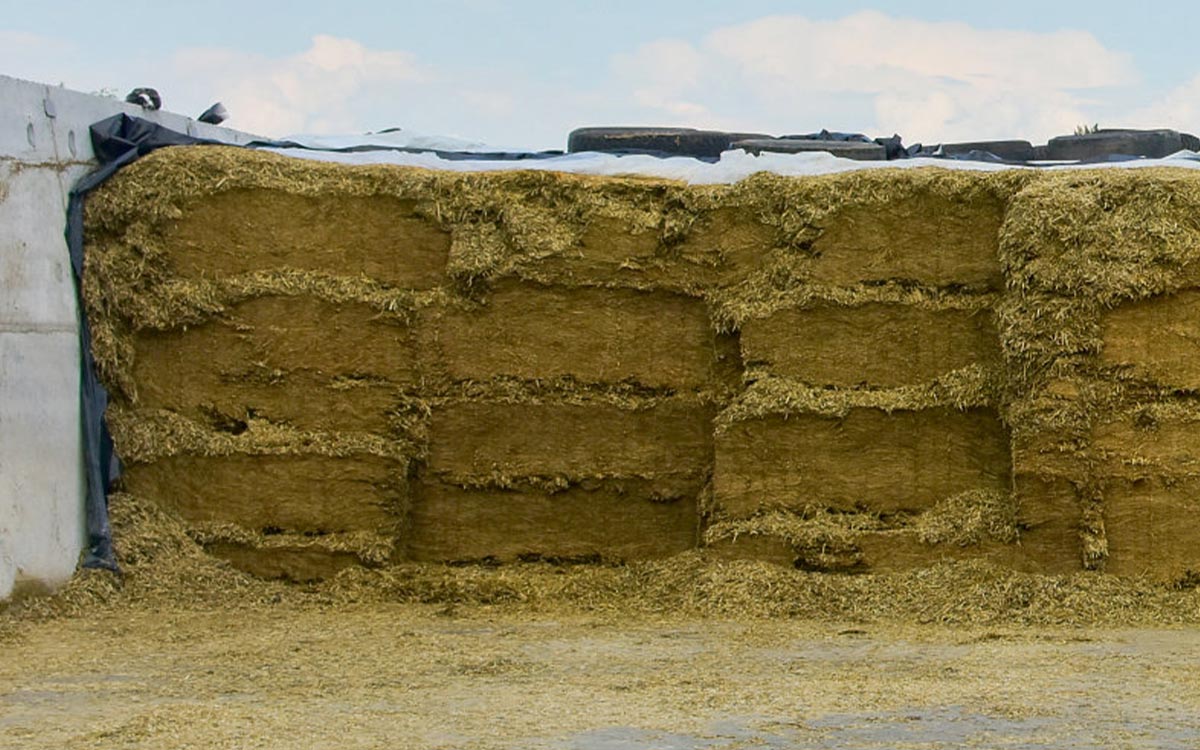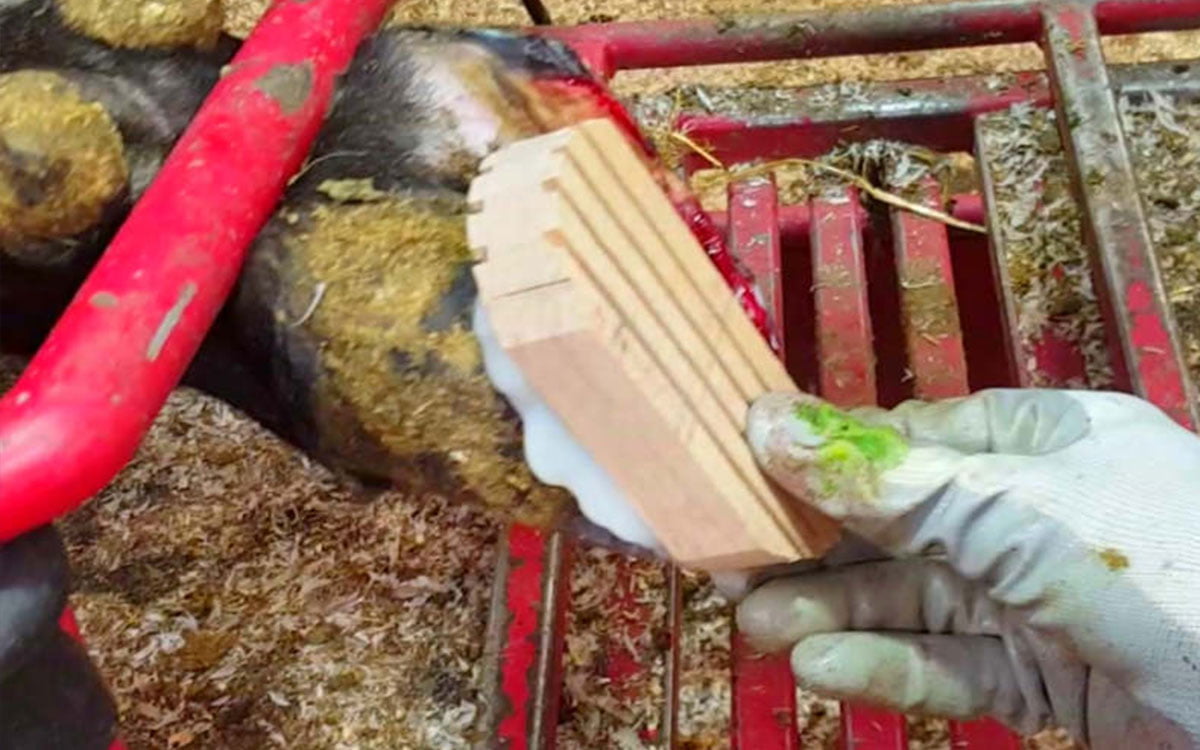Table of Contents
Farmers understand the importance of maintaining the health and well-being of livestock. One area that requires special attention is the care of their hooves. Hoof disorders can have a significant impact on the overall health and productivity of the animals. Besides proper and timely hoof trimming, we have tools that can assist us, including the foot bath. They have proven to be an effective preventive measure in managing hoof disorders. This comprehensive guide will explore the different foot bath options available, delve into the importance of all preventive measures, and learn how to calculate the perfect foot bath solution for your needs.
Table of Contents
Hoof disorders can wreak havoc on livestock, impacting productivity and comfort. Preventing these issues is key, and foot baths are a vital tool. This guide explores various foot bath schedules, emphasizes preventive measures, and the solution formula for your proper mixing ratios.
Prevention is always our preference when it comes to anything we do. Regarding hoof health, we always start with diagnosing and treating the individual lame cow. After that, we implement and fine-tune preventative tools, for example, hoof spraying with Hoof Sol Spray or using the foot bath method with Hoof Sol Bath and Intra Eco Bath.
This article delves deeper into the foot bath method as a preventative approach. Our article Mastering Dairy Foot Baths for Herd Success details placement and maintaining the foot bath.
Prevention of Hoof Disorders Using Footbaths
Hoof disorders are a common problem on farms, causing pain and discomfort to our livestock and resulting in decreased milk production and profitability. However, with the proper preventive measures in place, we can minimize the occurrence of these disorders.
Hoof problems can have a significant impact on the overall well-being of our animals. Not only do they cause physical discomfort, but they can also lead to reduced mobility and increased susceptibility to other diseases. It is crucial, therefore, to prioritize the prevention of hoof disorders to ensure the health and productivity of our livestock.
Important preventive measures for managing hoof disorders
Prevention is always better than cure, and this holds true when it comes to hoof disorders. (Sorry, as hoof trimmers, we can not do miracles and fix prolonged limping cows). Timely action is the road to success: the Triple-A approach pays off.
Implementing the following measures can help keep our animals’ hooves healthy and disease-free:
- Maintain clean and dry housing conditions – Ensure the floors are dry, clean, and free from sharp objects that could injure the hooves.
- Implement an effective preventative program that syncs with your farm – Hoof spraying sessions and foot baths are great tools for preventing infectious hoof disorders.
- Change footbath solutions regularly – foot baths consist of a solution the animals walk through, effectively killing bacteria and fungi that cause diseases. Periodically replacing the foot bath solution is crucial to maintaining its effectiveness. Over time, the foot bath solution loses its efficacy as pathogens accumulate. To ensure the foot bath remains effective, it is essential to change the solution at regular intervals.
- Regular spraying sessions – This relatively new method has been very successful. Not to mention all the benefits, but for example, every hoof gets clean product, and less product is being dumped in the environment.
- Monitor the herd’s hoof health – Regularly inspecting the hooves of our animals can help us identify any signs of hoof disorders early on. This enables us to take prompt action and prevent further complications.
By implementing these preventive measures, we can create an environment that promotes healthy hooves and reduces the risk of hoof disorders. This, in turn, leads to happier and more productive livestock.
Regularly replacing the foot bath solution is crucial to maintaining its effectiveness.
What hoof diseases are prevented by foot baths?
The effective use of foot baths can prevent a range of hoof diseases that commonly affect livestock. Some of the infectious hoof diseases that foot baths could help with include:
Foot rot – Foot rot is a bacterial infection that causes instant lameness and swelling in the hooves. It can be painful for the animals and significantly impact their mobility.
Digital dermatitis – Digital dermatitis, also known as hairy heel warts or Mortelaro disease, is a contagious hoof disease caused by treponema bacteria. It leads to painful lesions and can spread rapidly within a herd.
Interdigital dermatitis – Interdigital dermatitis, commonly known as heel erosion or slurry heel, is an infection that affects the skin between the claws of the hooves. It causes inflammation, poor heel horn, lameness, and discomfort for the animals.
Regularly using foot baths and ensuring the solutions are changed as needed can significantly reduce the risk of these common hoof disorders in our livestock. Communicate with your hoof trimmer about their findings after a trimming session and ask them for advice on finding the right preventive protocols on your farm.

Record Keeping Worksheet
Exploring Foot Bath Options: A Comprehensive Guide
Now that we understand the importance of foot baths as part of the protocol to prevent hoof disorders, let’s explore the different foot bath options available to us.
Foot baths are an essential aspect of hoof care for dairy cows. These animals require special attention to maintain their hoof health. Implementing a regular footbath schedule is crucial in preventing and managing hoof disorders.
What Kind of Foot Bath Should You Use?
When deciding on the type of footbath to use, several factors should be taken into consideration, such as your barn design, movability requirements, and investment budget. Tubs are available in both stainless steel and plastic materials, offering varied durability and upkeep needs. The Intra Bath contains two tubs and a stainless centre grill – the added feature and benefit is less pollution of the foot bath.
For a more permanent solution, built-in concrete footbaths can be integrated into the design of your barn. Additionally, automated footbaths are available, providing convenience as they will automatically fill and drain. Ultimately, the choice of footbath is contingent upon your specific needs and preferences.
How often do you foot bath dairy cows?
The frequency of foot-bathing dairy cows depends on various factors that should be considered. These factors include the housing conditions, the overall hoof health of the animals, and the prevalence of hoof disorders within your herd.
Conducting foot baths at least once a week is recommended as a general guideline. However, it’s important to remember that this frequency can vary based on the specific needs of your animals. Regular monitoring of hoof health and consulting with professionals can help determine the optimal footbath frequency for your dairy cows.
It’s essential to ensure that the footbath solution used is appropriate and registered to be used safely on your dairy farm. Not all footbath solutions are the same and have varying effectiveness against different hoof disorders. It is essential to check the product label to ensure that this product is safe to use and not carcinogenic.
Maintaining hoof health is an ongoing process that requires regular care and attention. Implementing a well-designed footbath schedule and staying vigilant about the overall hoof health of your dairy cows can significantly contribute to their overall well-being and productivity.
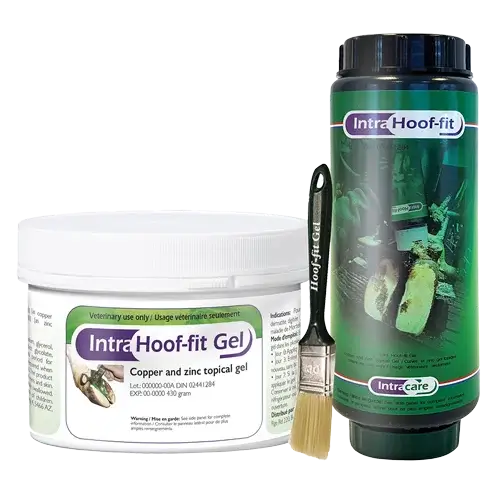
Hoof-fit Gel
Foot bath schedule for dairy cows
Developing a well-planned hoof care schedule is vital to ensure optimal hoof health in dairy cows.
Here’s a sample that can be followed wherein the footbath method is scheduled:
A. Weekly protocol for the first month
B. Weekly protocol for the second and future months
It’s important to note that this is a general schedule, and it is crucial to consider the specific needs of your herd. Consulting with a veterinarian or professional hoof trimmer can help you develop a tailored foot bath schedule that suits your cows’ requirements.
Foot bath usage as part of a Proven Protocol
Foot baths should always be part of a complete hoof care protocol – starting with treating the lame cow and following up with prevention methods. As mentioned before, hoof spraying and foot bathing are great options for achieving results and success.
A properly maintained foot bath should have a minimal depth of 4 inches (10 cm) at all times. For example, if your footbath is 30 inches wide (76 cm) and 72 inches long (180 cm), and the starting depth is 5 inches (12.5cm), the total solution it holds is 40 gallons (170 Liters). Our Hoof Sol Bath and Intra Eco Bath get mixed at 5%
While foot bathing is undoubtedly effective in preventing hoof disorders, determining the ideal foot bath solution is essential. The concentration and choice of the footbath solution play a crucial role in its effectiveness. Simple math on litres or gallons of water and the recommended concentration of the concentrate will make all the difference.
Some farms still choose Formalin – using this product (especially when mixed too strongly) can cause harm to the livestock’s hooves and is a carcinogen for the user. Using strong acidifiers is also proven to be working against our success. Prof. Doerte Dopfer of the School of Veterinary Medicine in Wisconsin shared to avoid harsh foot bath products:
“An increase of chronic proliferative DD lesions under too aggressive footbath and topical treatment approaches is a sign for irritation of the already inflamed and ulcerated skin surfaces, resulting in more inflammation and proliferation of the superficial skin.”
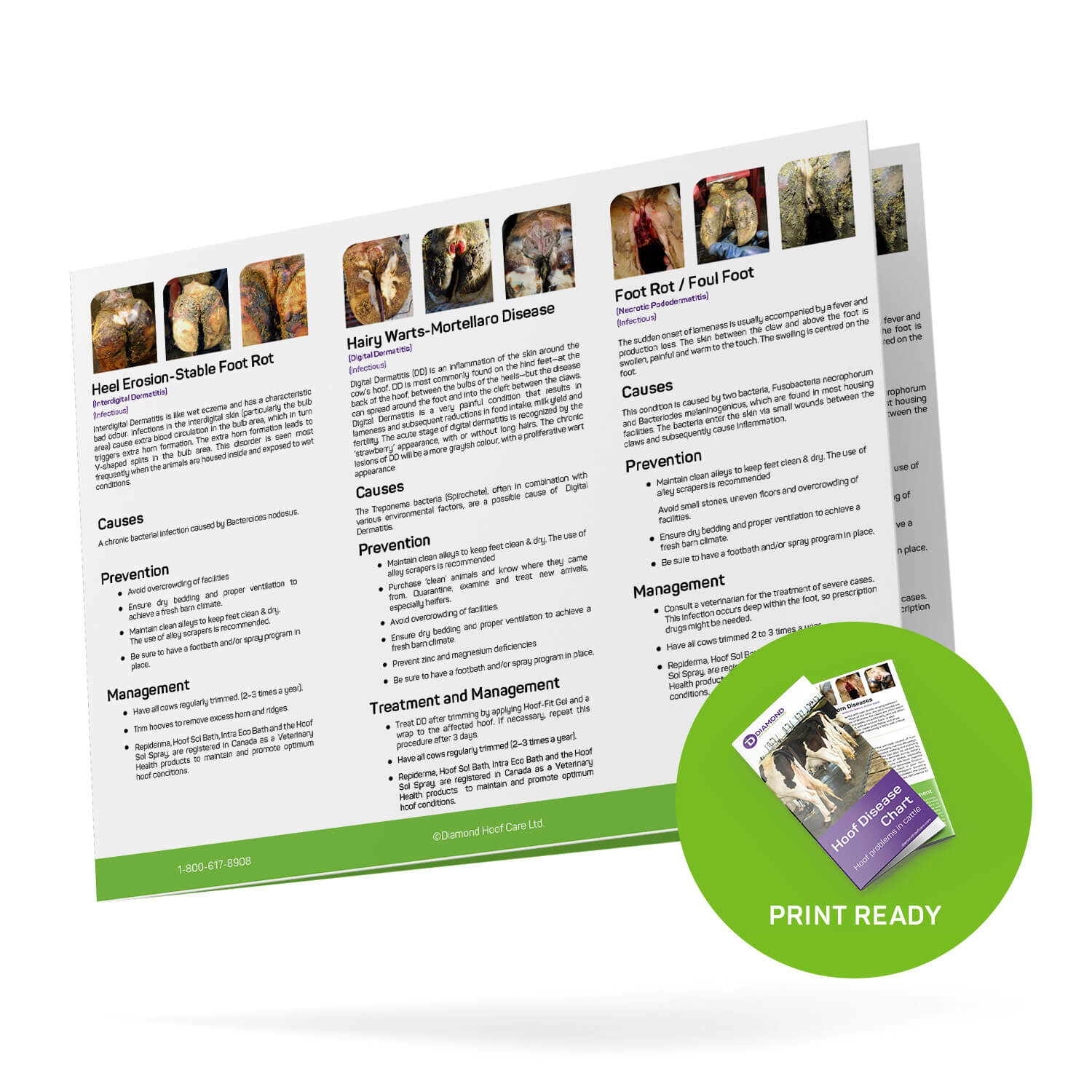
Hoof Disease Reference Chart
Understanding Animal Health: Diagnosis before treatment
Treating hoof disorders without an accurate diagnosis is like shooting in the dark. Diagnosis should always precede treatment to ensure that we provide our animals with the best possible care. This is where veterinarians and professional hoof trimmers play a crucial role.The Role of Veterinarians
Veterinarians have extensive knowledge and experience in diagnosing and treating various animal health conditions. Regarding hoof disorders, veterinarians can conduct thorough examinations and recommend appropriate treatment options based on their findings.
During the examination, veterinarians assess the animal’s overall health, looking for any signs of distress or abnormalities. They examine the hooves, checking for signs of infection, inflammation, or structural issues. In addition to the visual inspection, veterinarians may also use specialized hoof testers to apply gentle pressure distribution across the hoof, allowing them to identify any areas of concern.
The Role of Professional Hoof Trimmers
Professional hoof trimmers are experts in the fine art of hoof trimming. They possess the skills and knowledge to identify hoof disorders, trim hooves correctly, and provide valuable advice on preventive measures and treatment options.
When working with animals, professional hoof trimmers carefully observe the animals’ gait and behaviour to identify any signs of discomfort or irregularities. They assess the hooves, looking for any visible signs of overgrowth, cracks, or abnormalities. By understanding the anatomy and biomechanics of the foot, they can trim the hooves to promote proper weight distribution and minimize the risk of developing hoof disorders. Check out our post on where to find a hoof trimmer.
In addition to hoof trimming, professional hoof trimmers also provide guidance on preventive measures to maintain optimal hoof health. They may refer you to the herd nutritionist to recommend dietary adjustments, ensuring the animal receives the nutrients for strong and healthy hooves. They may also suggest environmental modifications, such as providing clean and dry bedding, to minimize the risk of hoof infections.
Collaborating with veterinarians, professional hoof trimmers, and nutritionists ensures that our animals receive the best care possible and helps us maintain their hoof health in the long run.
Conclusion About Foot Baths
A comprehensive approach to animal health management is essential for maintaining the well-being of our livestock. By prioritizing diagnosis before treatment, involving veterinarians and professional hoof trimmers, and implementing preventive measures, we can ensure your animals’ hooves remain healthy and strong. Let’s take a step towards healthier hooves and happier livestock!
